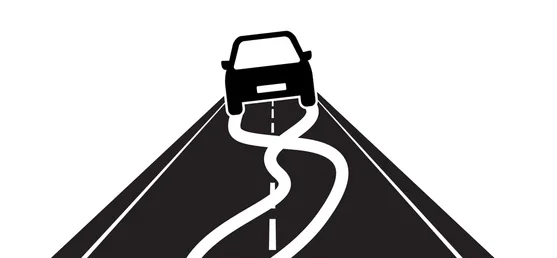Useful Tips to Stop Your Car From Skidding While Driving
Car skidding is one of the scariest things that can happen on the road. You lose grip, the vehicle starts to slide, and for a moment, you feel like you’ve lost control. The good news is that most skids are preventable when you understand what causes them and how to react the right way. Whether you drive a compact sedan, an SUV, or even an electric vehicle, a few smart habits can help you keep your car steady in rain, sand, gravel, or sudden braking situations.
In this blog, Drive UAE will explore why cars skid, common driving mistakes, and practical tips you can use every day to stay safe behind the wheel.
What Causes a Car to Skid?
A skid happens when your tyres lose traction on the road. This can occur for many reasons:
- Wet or slippery road surface
- Sharp turns at high speed
- Sudden braking or harsh acceleration
- Worn-out tyres with little tread
- Loose sand or gravel
- Snow, mud, or oil patches
- Incorrect tyre pressure
Once grip is lost, the vehicle slides in the direction of momentum. Understanding this helps you react calmly instead of panicking.

1. Slow Down Before You Enter Turns
Most skids happen inside a turn because drivers brake during the curve. When you brake while turning, weight shifts forward, reducing grip on the rear tyres. This is how you get oversteer or fishtailing.
A safer method:
Brake before the turn → enter at a steady speed → accelerate gently out of the curve.
This technique keeps the car balanced and avoids sudden weight shifts that can trigger a skid.
2. Avoid Harsh Braking
Braking hard on a wet or sandy road is a guaranteed way to make the tyres lock and slide. Modern cars have ABS, but even ABS can’t work miracles if the road is extremely slippery.
Here’s what you should do instead:
- Maintain a safe following distance
- Press the brake pedal gradually
- Let ABS do its job without pumping the brakes
Smooth input is the key. Think of your foot as a dimmer switch, not an on–off switch.
3. Keep Your Tyres in Good Shape
Your tyres are the only part of the car that touch the road, so they play a huge role in preventing skids.
Check the following regularly:
- Tread depth: Should be at least 3–4 mm for safe grip
- Tyre pressure: Underinflated tyres skid easily
- Uneven wear: May signal poor alignment
- Age: Even if the tyres look fine, rubber hardens after 4–5 years
Replacing worn tyres early is cheaper than risking an accident.

4. Avoid Sudden Acceleration
Hitting the accelerator too hard, especially on wet or loose surfaces, can cause wheel spin. This is when your tyres spin without actually moving the car forward.
Instead:
- Press the gas pedal gradually
- Let the car build speed smoothly
- In slippery conditions, start in a higher gear if your car allows it
This helps maintain traction and prevents the wheels from losing grip.
5. Learn the Right Way to Steer During a Skid
If your car does skid one day, knowing how to react can save you from a crash.
If the rear of the car slides (oversteer):
Turn the steering in the direction of the skid.
Example: If the back slides left, steer left.
If the front of the car slides (understeer):
- Ease off the accelerator
- Steer gently in the direction you want to go
- Avoid braking hard
Correct steering helps the tyres regain grip so you can stabilize the vehicle.
6. Keep a Safe Distance From Other Cars
Stopping distance increases when the road is wet, sandy, or dirty. Tailgating forces you to react quickly, which usually leads to hard braking, a common cause of skids.
A simple rule:
Keep at least 3 seconds of distance in normal weather and 5–6 seconds in bad weather.
Gaps save lives.

7. Reduce Speed During Rain, Fog, or Streamed Roads
Weather affects road grip more than many drivers realize. Rain mixes with oil residue on the road, creating a slick, almost greasy surface. Sandstorms leave a thin, slippery layer on highways. Fog reduces visibility, making it harder to anticipate road hazards.
So, reduce your speed. Even a small drop, like from 100 km/h to 80 km/h, can dramatically reduce your chances of skidding.
8. Keep Your Car Properly Maintained
A well-maintained car handles better. Some parts directly affect traction and stability:
- Suspension
- Brakes
- Shock absorbers
- Wheel alignment
- Tyre balancing
If these components are worn or misaligned, your car becomes harder to control, especially in emergency situations. Regular servicing can prevent hidden issues from turning into skids.

9. Avoid Puddles, Oil Patches, and Loose Sand
On highways, it’s common to find areas where sand collects near the edges or oil drips from vehicles. These surfaces reduce friction and can make your tyres slide unexpectedly.
If you see:
- A puddle
- A dark oil patch
- Loose gravel
- Sand accumulation
- slow down and pass through gently. Avoid sudden braking or turning.
10. Use Traction Control and Stability Systems
Most modern cars now come equipped with:
- TCS (Traction Control System)
- ESC (Electronic Stability Control)
- ABS (Anti-Lock Braking System)
These systems detect skids early and help control the car by correcting wheel spin or applying selective braking.
Always keep these systems ON. Many drivers turn them off for “fun driving,” but in real-world road conditions, they are essential safety tools.
11. Drive in the Right Gear on Slippery Roads
Driving in too low a gear sends extra torque to the wheels, which can cause skidding. Higher gears reduce wheel spin and keep the car stable.
In slippery situations like rain, snow, or sand:
- Start in 2nd gear if possible
- Shift early
- Avoid sudden gear changes
Smoothness matters more than speed.

12. Stay Calm and Avoid Overreacting
Many skids become worse because the driver panics and reacts too aggressively. Staying calm is one of the best things you can do.
If your car begins to skid:
- Don’t slam the brakes
- Don’t yank the steering wheel
- Don’t accelerate suddenly
Instead:
- Breathe
- Steer gently
- Regain control gradually
A calm reaction gives the tyres time to recover grip.
Conclusion
Skidding can happen to any driver, no matter how skilled they are. But with the right habits, you can reduce the risk and stay safe on the road. Drive smoothly, maintain your tyres, slow down in poor weather, keep your car in good shape, and react calmly if the vehicle does slide. These simple steps can protect you, your passengers, and everyone else on the road.
Safe driving is not just about knowing how to control your car, it’s about anticipating problems before they happen. The more mindful you are behind the wheel, the easier it is to avoid skids and enjoy a safer journey every time.

